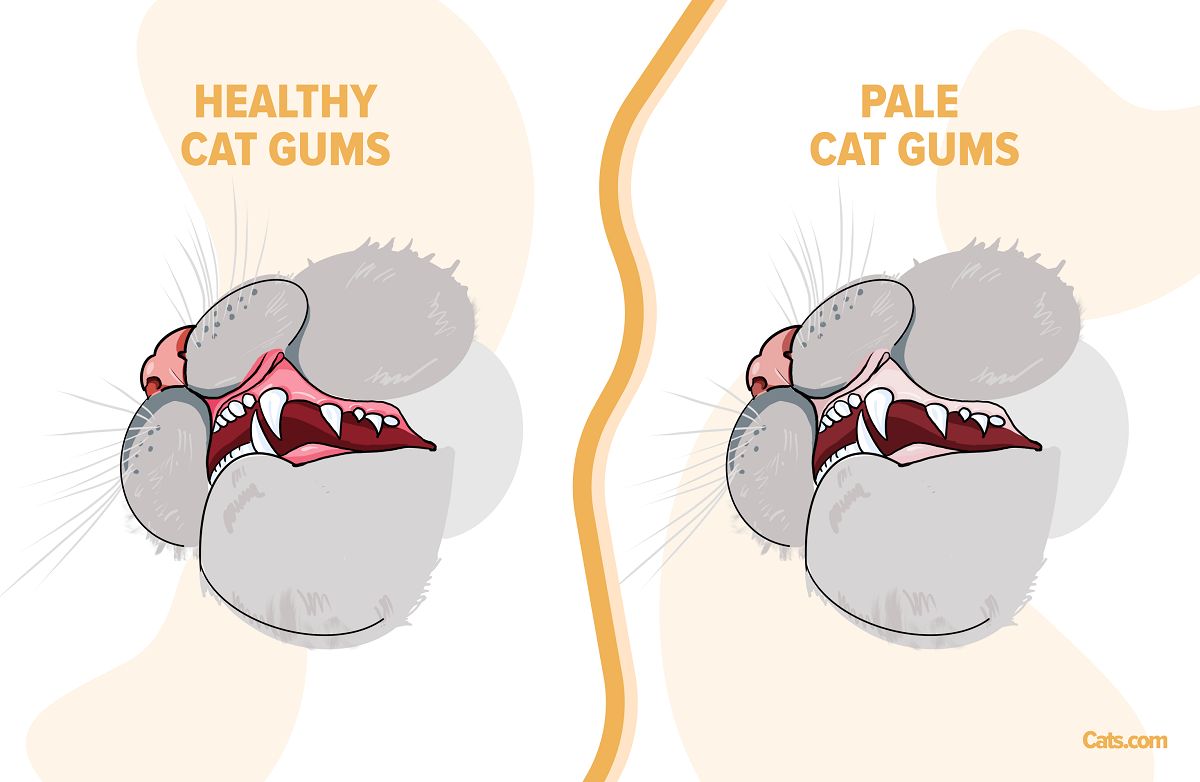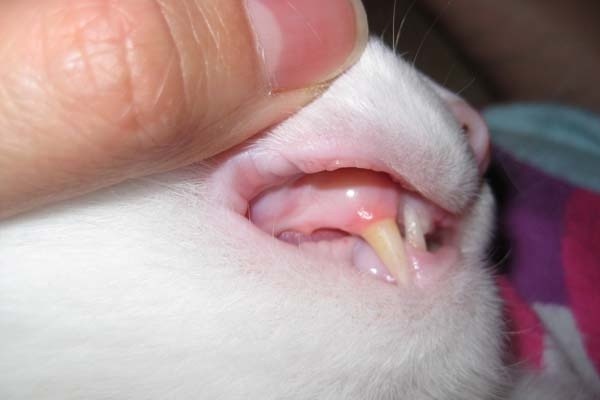The pale gums in cats can indicate various health issues, such as anemia or blood circulation problems. Cats with pale gums may be experiencing anemia or poor blood circulation, which suggests an underlying health issue.
Anemia can be caused by factors like internal bleeding, kidney disease, or flea infestations, while poor blood circulation may be a sign of heart disease or dehydration. Pale gums are a result of reduced blood flow and oxygen supply to the tissues, causing them to appear whitish or pale pink instead of their normal vibrant pink color.
If you notice pale gums in your cat, it is crucial to consult a veterinarian promptly for a thorough examination and proper diagnosis. Addressing the underlying cause is essential for your cat’s overall health and well-being.
Signs Of Pale Gums In Cats
Observing changes in gum color can provide important insights into your cat’s health. Pale gums in cats can be a sign of an underlying health issue and should be taken seriously. Pale gums are often an indication of reduced blood flow or a decrease in red blood cell production. It is essential to monitor your cat’s gum color regularly to detect any changes.
Pale gums may indicate various health conditions in cats. They can be a symptom of anemia, which can result from blood loss, nutritional deficiencies, or underlying medical conditions. Other possible causes of pale gums include shock, dehydration, internal bleeding, or organ dysfunction. If you notice that your cat’s gums are pale or have changed from their normal healthy pink color, it is crucial to consult a veterinarian for proper diagnosis and treatment.
Common Causes Of Pale Gums In Cats
If you notice that your cat’s gums are pale, it is important to determine the underlying cause. Pale gums in cats can be attributed to various factors, such as anemia, blood loss, and poor circulation.
Anemia occurs when there is a decrease in the number of red blood cells or a low level of hemoglobin in the blood. This can be caused by conditions such as flea infestations, infections, or underlying diseases.
Blood loss can lead to pale gums in cats. This can occur due to injuries, internal bleeding, or ingestion of toxic substances.
Poor circulation can also contribute to pale gums. Conditions like heart disease or shock can affect blood flow, resulting in paleness.
It is important to closely monitor your cat’s overall health and behavior if you notice pale gums. Seeking veterinary care is crucial to determine the exact cause and provide appropriate treatment.
Identifying Pale Gums In Cats
Identifying pale gums in cats is an essential skill for every cat owner. Pale gums can be an indication of an underlying health issue and should not be ignored. To check for pale gum color, gently lift your cat’s lip and observe the color of the gums. Normally, a healthy cat will have pink gums, but if you notice a paleness or whitish color, it may indicate anemia, dehydration, or internal bleeding.
In addition to pale gums, it is crucial to assess other symptoms that may accompany the paleness. Pay attention to changes in your cat’s appetite, energy level, and behavior. Other symptoms such as lethargy, weight loss, vomiting, or unusual bleeding should not be ignored and may require immediate veterinary attention.
Being vigilant about monitoring your cat’s gum color and recognizing any changes can help detect potential health problems early on. Regular check-ups with your veterinarian are also highly recommended to ensure your cat’s overall well-being.
Underlying Health Conditions
Pale gums in cats can be a sign of underlying health conditions. One such condition is Feline Leukemia Virus (FeLV), which weakens the immune system and can lead to pale gums. Another condition that may cause pale gums in cats is kidney disease. When the kidneys are not functioning properly, it can lead to anemia, resulting in pale gums. Gastrointestinal issues can also contribute to pale gums in cats. Poor absorption of nutrients can lead to anemia and pale gums. If your cat’s gums are pale, it is important to consult a veterinarian to determine the underlying cause and provide appropriate treatment. Early detection of these conditions can greatly improve the chances of successful treatment and a better quality of life for your feline friend.
Diagnosis And Treatment Options
When observing pale gums in cats, it is essential to consult a veterinarian for a complete examination and accurate diagnosis. The veterinarian may perform blood tests to identify any underlying conditions causing the paleness. Once the condition is identified, appropriate treatment options can be explored.
Treating the underlying condition is crucial for restoring healthy gum color. This may involve medications, dietary changes, or surgical interventions, depending on the specific issue. In some cases, blood transfusions may be necessary to improve red blood cell count and address anemia.
In addition to medical intervention, iron supplements may be recommended to support red blood cell production and promote gum health. These supplements can be administered in various forms, such as tablets or liquid, and should be given as directed by the veterinarian.
Remember, it is always best to seek professional advice from a veterinarian rather than attempting to diagnose or treat your cat’s pale gums on your own.

Credit: cats.com
Preventive Measures For Pale Gums
Proper nutrition and hydration play a crucial role in maintaining healthy gums for your cats. Make sure to provide a balanced diet with all the essential vitamins and minerals they need. Fresh water should always be available to keep them hydrated. Regular check-ups with a veterinarian are essential to catch any potential health issues early on. A vet can examine your cat’s gums and address any concerns promptly. Prevention is key when it comes to parasites that can affect your cat’s gums. Use appropriate flea and tick control products to prevent infestations.
Conclusion
To sum it up, pale gums in cats can be a sign of underlying health issues that shouldn’t be ignored. It’s crucial to monitor your furry friend’s oral health regularly and consult a veterinarian if you notice any changes. Remember, proactive care and regular check-ups are essential in keeping your cat happy and healthy.
Stay informed, be observant, and prioritize your cat’s well-being for a lifetime of purr-fect oral health.


